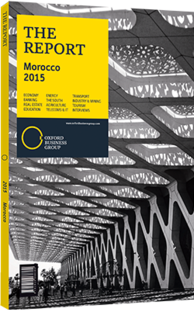Large clients get the largest share of loans in Morocco
By regional standards, Moroccan banks have substantial lending capacity. The kingdom is home to some of the largest banks in Africa: Attijarawafa Bank is the continent’s third-largest, and its three biggest banks are also the three largest in North Africa by tier-1 capital. Credit extended to the local private sector was equal to 70.1% of GDP in 2013, compared to 16.5% in Algeria and an average of 25% for developing countries in MENA (excluding the GCC), according to the World Bank, indicating its intermediation levels are high for the region. Steady falls in non-performing loans have also lifted lending capacity by reducing the need for provisioning (see overview).
SME Financing
Despite these merits, respondents to the World Economic Forum’s “2014-15 Global Competitiveness Report” named financial access the top concern for doing business in the kingdom. As in many emerging markets, but particularly in Morocco, small and medium-sized enterprises (SMEs) complain of difficulties accessing credit, suggesting the problem lies less in banks’ capacities than in their willingness to lend to certain segments. Banks are, however, becoming increasingly keen to service this area.
Many measures have been taken to boost borrowing options for smaller firms. One initiative launched in late 2012 by the central bank, Bank Al Maghrib (BAM), encourages loans to SMEs by allowing banks to use them as collateral for financing from the central bank. Banks can fully refinance loans to SMEs, with even better terms for loans to industrial SMEs whose turnover is at least 40% export-generated. In 2014 BAM made Dh19bn (€2.07bn) in advances to banks under this scheme, up from Dh6bn (€652.8m) in 2013.
Among the new initiatives to boost lending to small firms is an “SME Observatory”, established by BAM, the employers’ confederation and several other institutions to monitor issues such as small businesses’ access to finance and to address a lack of reliable official data on the segment. The agency was due to be up and running in 2014 but as of mid-2015 did not yet appear to have become operational. “The challenge is to reinforce SMEs’ existing access to financing; the segment already accounts for a significant proportion of total bank credit,” Hiba Zahoui, deputy director of the banking supervision directorate at BAM, told OBG. He added that the main problem was access to finance for very small enterprises in particular. A third initiative is Moukawalati, a state-backed fund that will provide very small enterprises with zero-interest loans of up to Dh15,000 (€1632) and guarantee up to 85% of debt taken on by these firms.
Lending to Corporates
At the other end of the client spectrum, banks have been keen to lend to local corporates. This is occurring even as the proportion of lending that goes to large clients has fallen in recent years – the ratio of lending to major borrowers (those whose loans individually account for more than 5% of a bank’s capital) stood at 3.3 in 2013, down from 3.8 five years earlier, according to BAM. Nevertheless, banks do face constraints on their ability to lend to larger clients: there is a single-borrower limit of 20% of a bank’s capital, and the large size of some Moroccan corporates and their projects can make it difficult for individual banks to meet their needs.
Syndication
To deal with such constraints, banks in the kingdom and their larger clients often turn to syndicated loans, many of which go towards infrastructure projects. Recent examples of projects funded by syndication in the kingdom include a facility worth about Dh1bn (€108.8m) extended by a consortium of Attijarawafa Bank, BCMI and BCP to expand the Tarfaya wind power plant, as local press reported in March 2015. The initial construction of the plant was also funded in part by a pooled loan; the project’s total investment cost was Dh5bn (€544m), though an unspecified amount was financed by the plant’s backers, GDF Suez and Nareva. Other major examples include a Dh2.4bn (€261m), four-year facility provided in 2012 to telecoms operator Meditel by a group of seven banks led by BMCE Bank and Société Générale.
You have reached the limit of premium articles you can view for free.
Choose from the options below to purchase print or digital editions of our Reports. You can also purchase a website subscription giving you unlimited access to all of our Reports online for 12 months.
If you have already purchased this Report or have a website subscription, please login to continue.

